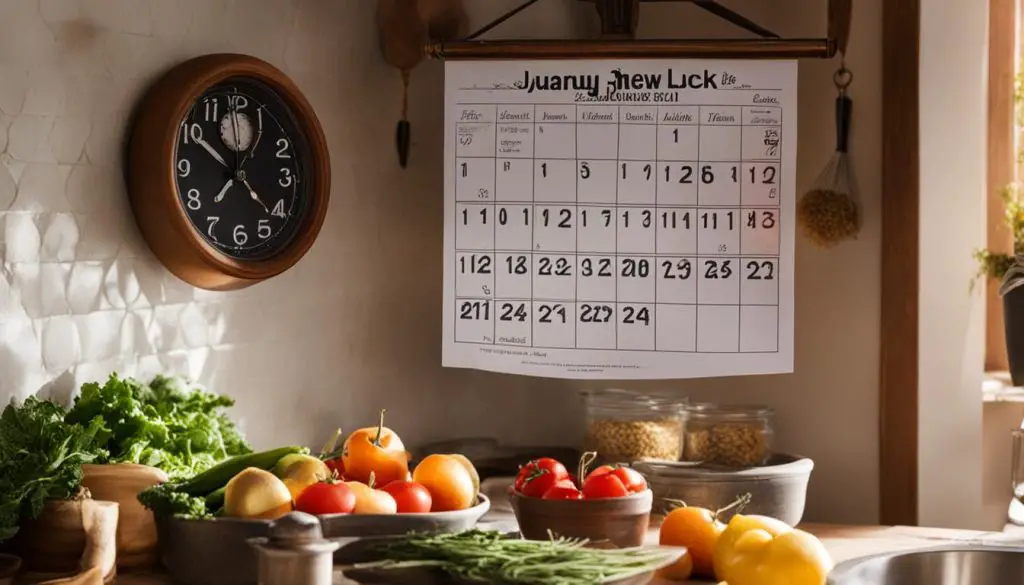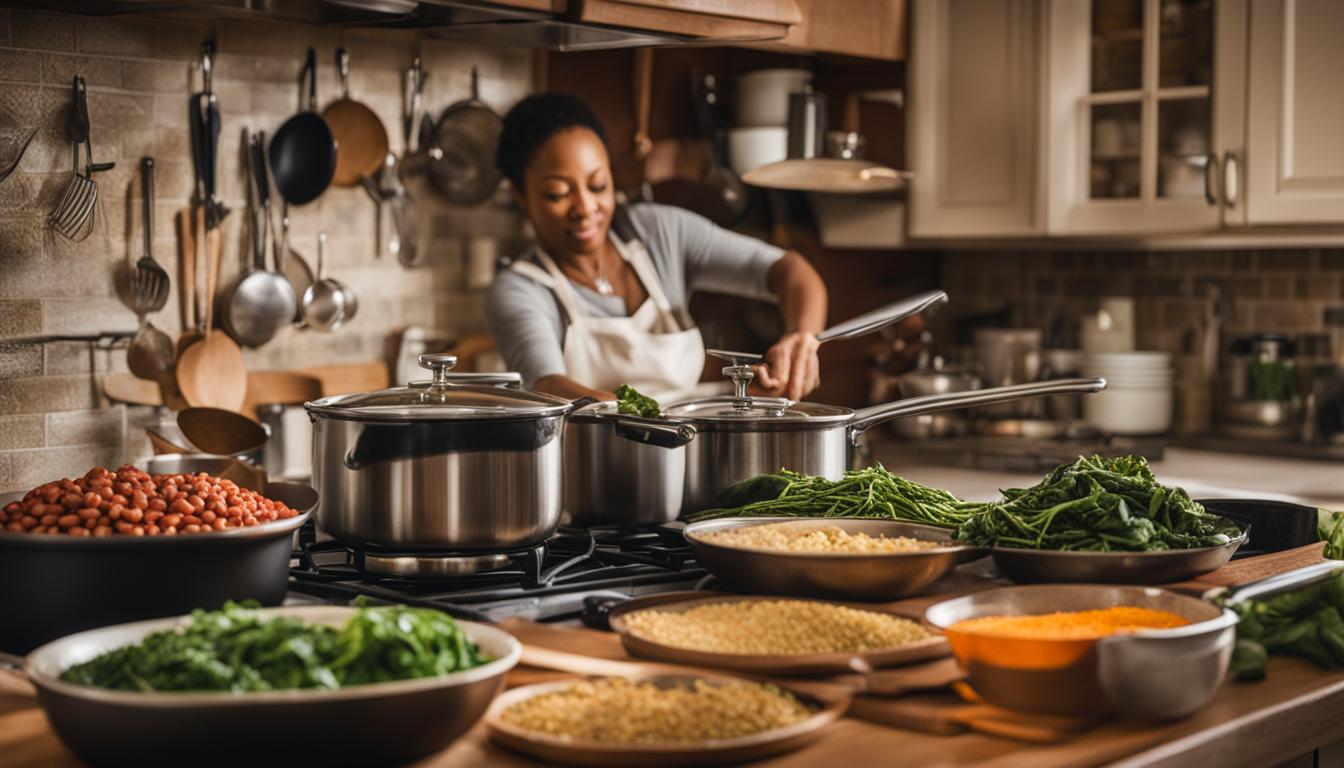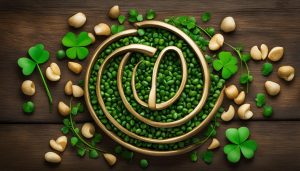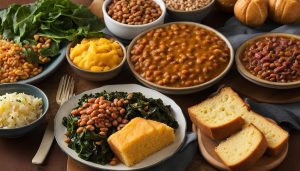According to Southern lore, it is believed that having the traditional New Year’s Day supper brings good luck for the entire year. The meal typically consists of collard greens, hoppin’ John, black-eyed peas, cornbread, and pot likker soup. These dishes are associated with wealth, prosperity, and good fortune. In the South, it is customary to cook and enjoy this meal on New Year’s Day. In order to have an auspicious start to the year, it is recommended to prepare and cook the good luck meal on the first day of the new year.
Contents
Key Takeaways:
- The traditional New Year’s Day supper is believed to bring good luck for the entire year according to Southern lore.
- It is customary to cook and enjoy this meal on New Year’s Day in the South.
- Preparing and cooking the good luck meal on the first day of the new year ensures an auspicious start to the year.
- The meal typically includes collard greens, hoppin’ John, black-eyed peas, cornbread, and pot likker soup.
- These dishes are associated with wealth, prosperity, and good fortune.
Traditional New Year’s Day Recipes for Good Luck
When it comes to celebrating the New Year, many people have their own unique traditions and rituals to ensure a prosperous year ahead. In the southern United States, one popular tradition is cooking and enjoying a special New Year’s Day meal that is believed to bring good luck and prosperity. This meal typically includes dishes such as Hoppin’ John, collard greens, and cornbread, each with their own symbolic meaning.
Hoppin’ John, a peas and rice dish seasoned with pork, is a staple of the New Year’s Day meal. The black-eyed peas are said to represent coins, symbolizing wealth and prosperity for the coming year. Collard greens, cooked with pork for added flavor, are believed to bring money and financial stability. Cornbread, with its golden color, represents gold and is associated with good fortune.
To prepare this traditional New Year’s Day meal, it is best to start cooking in the morning or early afternoon to ensure that all the dishes are ready for the New Year’s Day supper. Soaking the black-eyed peas overnight is recommended, as they often require a longer cooking time. While the peas are simmering, you can prepare the collard greens and Hoppin’ John. These dishes can be cooked simultaneously to save time. Finally, make the cornbread just before serving the meal to ensure it is fresh and warm.
By following these cooking traditions for the New Year’s Day good luck meal, you can embrace the rich heritage and symbolism of these dishes. Whether you believe in their supernatural powers or simply enjoy the flavors of these traditional recipes, cooking and sharing this meal with loved ones is a meaningful way to start the year off right.
| Traditional New Year’s Day Recipes | Symbolic Meaning |
|---|---|
| Hoppin’ John | Representing wealth and prosperity |
| Collard Greens | Bringing money and financial stability |
| Cornbread | Symbolizing good fortune and abundance |
New Year’s Day Meal Planning and Timing
When preparing your New Year’s Day meal, it’s essential to consider the timing and scheduling of each dish to ensure a successful and auspicious start to the year. By following a well-thought-out cooking schedule, you can enjoy a delicious and lucky meal with your loved ones.
Creating a Cooking Schedule
Start by creating a cooking schedule that outlines the necessary steps and cooking times for each dish. This schedule will help you stay organized and ensure that everything is ready at the right time. Here’s a sample cooking schedule for a traditional New Year’s Day meal:
- 8:00 AM: Soak the black-eyed peas overnight to reduce their cooking time.
- 10:00 AM: Begin cooking the collard greens and prepare the Hoppin’ John.
- 11:30 AM: Check the progress of the black-eyed peas and adjust the cooking time if needed.
- 12:00 PM: Finish cooking the collard greens and Hoppin’ John.
- 12:30 PM: Prepare the cornbread and bake it just before serving the meal.
By starting your cooking in the morning, you’ll have ample time to prepare each dish and ensure they are ready for the New Year’s Day supper.
Timing and Preparation Tips
Keep these timing and preparation tips in mind as you plan your New Year’s Day meal:
- Soak the black-eyed peas overnight to reduce cooking time.
- Cook the collard greens and Hoppin’ John simultaneously to save time.
- Prepare the cornbread just before serving to ensure it’s warm and fresh.

| Time | Task |
|---|---|
| 8:00 AM | Soak black-eyed peas overnight |
| 10:00 AM | Cook collard greens and prepare Hoppin’ John |
| 11:30 AM | Check progress of black-eyed peas |
| 12:00 PM | Finish cooking collard greens and Hoppin’ John |
| 12:30 PM | Prepare and bake cornbread |
Use this sample cooking schedule as a starting point and adjust the times based on your personal preferences and the specific recipes you’re using. With careful planning and preparation, you can enjoy a delicious and lucky New Year’s Day meal.
Traditional Foods for Good Luck on New Year’s Day
In many cultures and countries, specific foods are believed to bring good luck on New Year’s Day. In the southern United States, this includes dishes such as black-eyed peas, collard greens, and cornbread. Black-eyed peas are often associated with wealth and prosperity, while collard greens symbolize money and cornbread represents gold. These foods are typically cooked and enjoyed on New Year’s Day to ensure a prosperous and lucky year ahead.
The best time to cook these dishes is in the morning or early afternoon, allowing enough time for preparation and cooking. By starting early in the day, you can have the meal ready in time for the New Year’s Day supper. It is important to plan your cooking schedule accordingly, considering the longer cooking time for dishes like black-eyed peas that may require soaking overnight. By following these traditions and preparing these symbolic dishes, you are setting the stage for a fortunate and auspicious start to the new year.
So, as you celebrate the arrival of the new year, don’t forget to include these traditional foods for good luck in your meal. Fill your plate with black-eyed peas, collard greens, and cornbread, and savor the flavors that represent prosperity, wealth, and abundance. Whether you follow the southern tradition or incorporate elements from other cultures, these dishes are sure to bring a sense of luck and positivity to your New Year’s Day celebration.

Conclusion
Cooking a good luck meal on New Year’s Day is a cherished tradition in southern culture. These traditional recipes, deeply rooted in the region’s culinary heritage, symbolize wealth, luck, and abundance. By following the recommended cooking schedule and indulging in these flavorful dishes, you can set the stage for an auspicious start to the new year.
Whether it’s a steaming bowl of Hoppin’ John, a plate of tender collard greens, or a slice of golden cornbread, each dish carries the hopes and beliefs of generations past. The combination of these foods is believed to bring good fortune and prosperity for the upcoming year, making them an integral part of New Year’s Day celebrations in the South.
So, embrace the tradition, gather your loved ones, and savor every bite of your New Year’s good luck meal. Let the aroma fill your home and your heart, as you create memories that will last a lifetime. Here’s to a prosperous and lucky year ahead, filled with the flavors and traditions that make southern culture so special.
FAQ
When should I cook my good luck meal for the New Year?
It is recommended to cook the good luck meal on New Year’s Day, preferably in the morning or early afternoon.
What are some traditional New Year’s Day recipes for good luck?
Traditional recipes for New Year’s Day include Hoppin’ John, collard greens, and cornbread.
How should I plan and time my New Year’s Day meal?
Start by making a cooking schedule and soak the black-eyed peas overnight. Cook the collard greens and prepare the Hoppin’ John, then make the cornbread just before serving the meal.
What are the traditional foods for good luck on New Year’s Day?
Black-eyed peas, collard greens, and cornbread are commonly associated with good luck on New Year’s Day.





